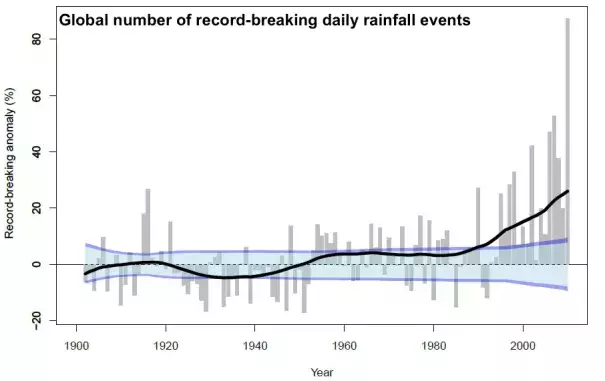Chart: Global annual record-breaking anomaly and long term trend

Annual record-breaking anomaly (grey bars) shown globally. The long-term non-linear trend in record-breaking anomaly (black line) is calculated using singular spectrum analysis with window length of 15 years. The shaded areas reflect the 90 % (light blue shading) and 95 % (dark blue shading) confidence interval for equally computed long-term non-linear trends of the iid-model. The solid black line is thus directly comparable to the shaded confidence intervals.
On a global scale, the most prominent feature is a strong and consistent increase in the annual record-breaking anomaly since the 1980s as indicated by the long-term non-linear trend shown in the figure (black line). The mean record-breaking anomaly has significantly increased to +12 % more rainfall extremes compared to iid-expected in 1980–2010.
The record-breaking anomaly peaks in 2010, which saw +88 % more record-breaking events (grey bars) than expected by the iid case. The long-term non-linear trend of the global record-breaking anomaly significantly increases from 1980 onward reaching +26 % in 2010.
A significant increase in the long-term non-linear trend between 1980 and 2010 is also seen over the northern extratropics (+31 % in 2010) and in the tropics (+31 % in 2010). The northern subtropics have also seen an upward trend but it is not statistically significant (+13 % in 2010).[1]


